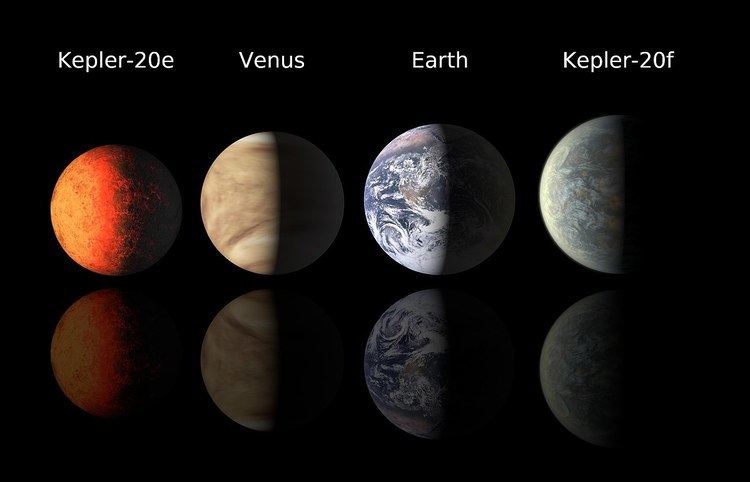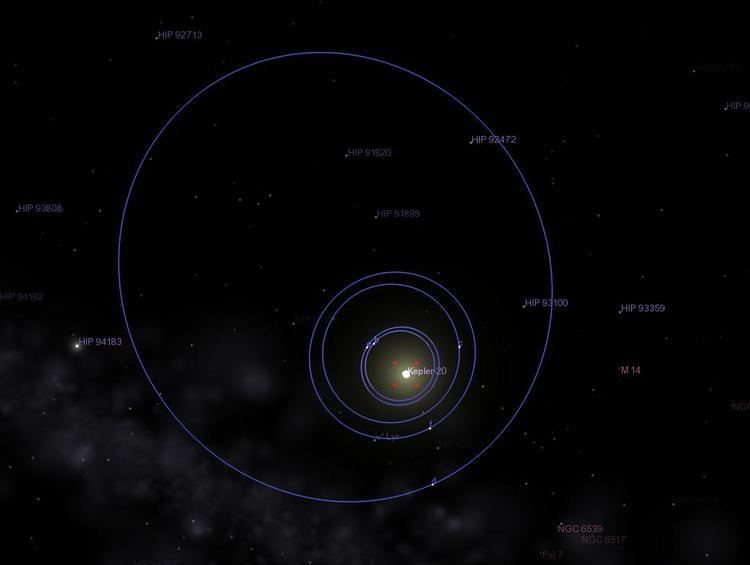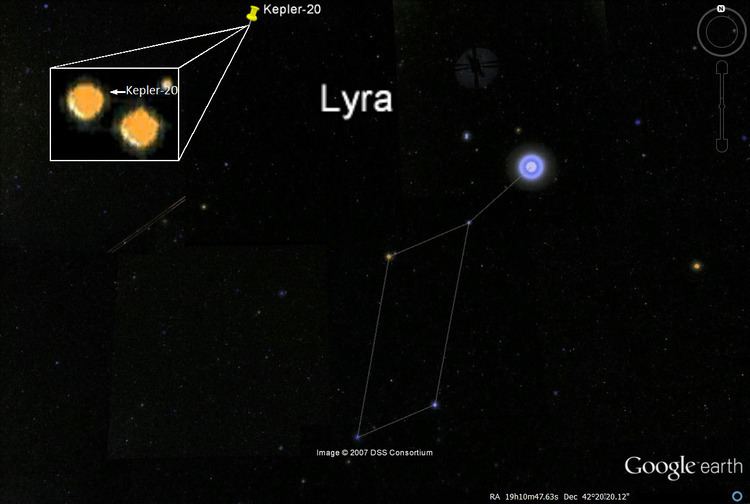Magnitude 12.51 Apparent magnitude (V) 12.51 | ||
Kepler-20 is a star 950 light-years from Earth in the constellation Lyra with a system of five known planets. The apparent magnitude of this star is 12.51, so it cannot be seen with the unaided eye. Viewing it requires a telescope with an aperture of 15 cm (6 in) or more. It is slightly smaller than the Sun, with 94% of the Sun's radius and about 91% of the Sun's mass. The effective temperature of the photosphere is slightly cooler than that of the Sun at 7003546600000000000♠5466 K, giving it the characteristic yellow hue of a stellar class G8 star. The abundance of elements other than hydrogen or helium, what astronomers term the metallicity, is approximately the same as in the Sun. It may be older than the Sun, although the margin of error here is relatively large.
Contents

Kepler 20 star system an unusual planetary system
Planetary system

On December 20, 2011, the Kepler Space Telescope team reported the discovery of a five planet system containing three small gas giants and the first two Earth-sized extrasolar planets, Kepler-20e (the first known extrasolar planet smaller than Earth orbiting a main-sequence star) and Kepler-20f, orbiting a Sun-like star. Although the planets are Earth-sized, they are not Earth-like in the respect that they are much closer to their star than Earth, and are hence not near the habitable zone, with expected surface temperatures of 760 °C (1,400 °F) and 427 °C (801 °F), respectively. The three other Neptune-sized planets in the system, Kepler-20b, Kepler-20c, and Kepler-20d, all orbit similarly close to the star. Kepler-20g is an non-transiting exoplanet orbiting Kepler-20.

The masses of e and f are expected masses. Their masses are uncertain as they are too small to detect via radial velocity with current technology.
All planets are at small near resonances; proceeding outwards, they are 3:2, 4:2, 2:1, 4:1.


